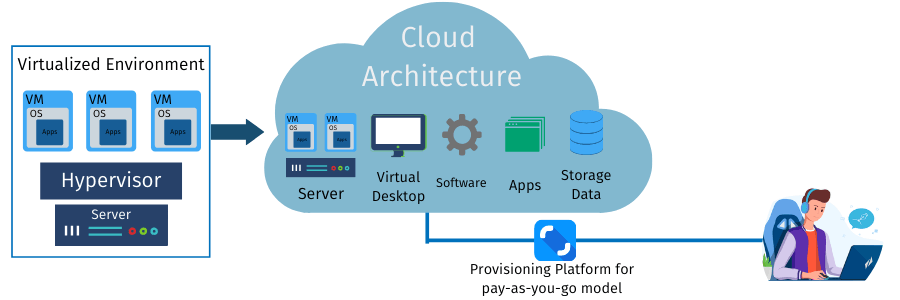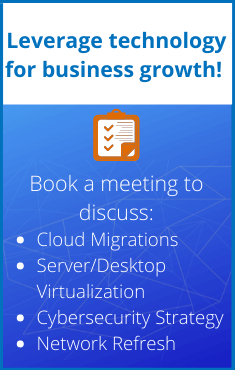Oftentimes “buzzwords”, virtualization and cloud computing are two terms that seem interchangeable, especially if you’re not familiar with how they work. Although the two technologies allow business continuity and are similar, they are not the same thing.
This blog will describe some of the fundamental differences between these two, from management and control to elasticity and scalability.
How is Virtualization different from Cloud Computing?
One of the main differences between virtualization and cloud computing is management. In a virtualized environment an individual needs to control and manage the provision and deployment of virtualized resources, while in a cloud environment you can automate these functions using an API (Application Programming Interface) or a Cloud Operating System.
Virtualization is enabled by a technology called Hypervisor which is a software that is able to split the computing resources of hardware. The Hypervisor needs to be managed and controlled by an individual, who then configures it to split the hardware into multiple virtual environments with different operating systems, applications, and data.
Hence, deploying a fully virtualized environment will require an experienced engineer that allocates and manages resources, which can also make it difficult to scale as you will rely on human actions.
However, from a technology point of view, virtualization is the foundation for cloud computing. By virtualizing servers, a cloud provider is able to create different environments using the same hardware and modifying it (OS, Apps, Data) as many times as possible to fit end-user demands.

Every cloud architecture starts with virtualizing servers, but it needs a Cloud Operating System or API to truly provide cloud services. This Operating System enables capabilities such as elasticity (pay-per-user or pay-per-device mode), rapid provisioning and configuring, and a way to quantify the usage both in time and cost.
Which one is best for your Business?
Even though VDI (Virtual Desktop Infrastructure) has proven to be a great option for SMBs and some of the biggest myths of desktop virtualization have been debunked, this might still not be a good option for every business. It depends on the specific needs, requirements, and business goals.
For instance, virtualization can offer great benefits to businesses that already have two or three servers, that handle high amounts of data, or proprietary applications. This is the case with engineering or design firms that handle a large asset-base on their servers, virtualizing these will help them reduce costs and optimize the use of the existing hardware.
On the other hand, a small marketing firm that entirely uses cloud services such as Dropbox, Microsoft 365, and Hubspot, might not need to invest in on-site hardware. Therefore virtualization won’t be a good option as it will just add complexity to a technology environment that’s already functional via the cloud.
Whichever option you select, understanding the differences between virtualization specifically and cloud computing more generally is key to effectively navigating the increasingly complex corporate technology landscape. You can always trust the experience of a top IT Service Provider in Boston to advise you on the solution that better fits your business.

